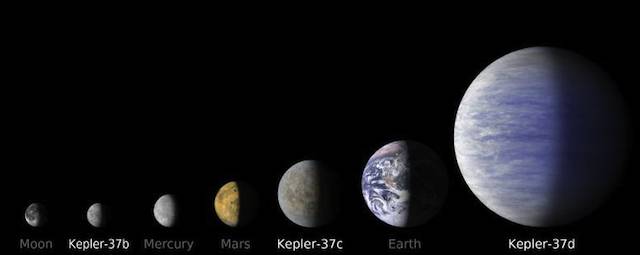Original URL: https://www.theregister.com/2013/02/21/smallest_exoplanet_yet_found_kepler_37b/
Boffins spot Luna-sized exoplanet
Tiny 'Kepler-37b' is smaller than Mercury and very nasty
Posted in Science, 21st February 2013 05:05 GMT
Exoplanet hunters have made their smallest find ever, Kepler-37b, which is only fractionally larger than Earth's moon and rather smaller than Mercury.
The planet and its star are about 210 light-years from Earth in the constellation Lyra.
In a Letter to Nature, over 50 co-authors explain how the Kepler spacecraft helped them to spot and analyse the planet. Two of those work at the University of Sydney, which has published a brief precis of their thinking on the find.
"While theoretically such small planets are expected, detection of tiny planet Kepler-37b is remarkable given its transit signal is detectable on less than 0.5 percent of stars observed by Kepler," said Professor Tim Bedding, head of the University's School of Physics.
Dr Dennis Stello, an Australian Research Fellow in the same School said the size of the planet and its sun were deduced after the team “analysed the frequencies of standing sound waves inside the star to tell its size in the same way that you could tell the difference in size of a violin and cello by the difference in the pitch of the sound they produce.”
That analysis told boffins that Kepler-37 “is about 20 percent smaller than the sun”, which Stello says “is very important because the accuracy with which we can measure the radius of the planet Kepler-37b is limited by how accurately we can calculate the radius of Kepler-37.”
That radius is now felt to be very close to that of Earth's moon, The team also spotted Venus-sized Kepler-37c and another body double the size of Earth called Kepler-37d.
The three planets are the only one in orbit around their star. None seem particularly hospitable, with all orbiting closer to their sun than Mercury does to ours. All are therefore strong candidates to be nasty hot rocks lacking atmospheres, shade or any hospitable features.

Kepler-37b on a scale compared to other worlds
Image credit: NASA/Ames/JPL-Caltech
News of nicer planets may be on the way, as Stello says “Our work from here is to keep working with the planet team at NASA to make seismic analyses of planet-hosting stars, and there are some exciting results in the pipeline.” ®